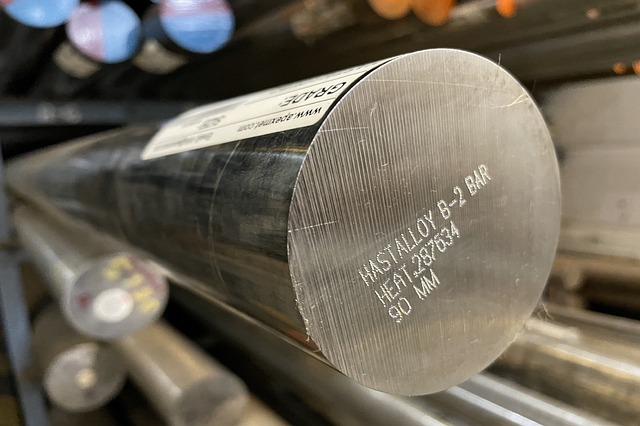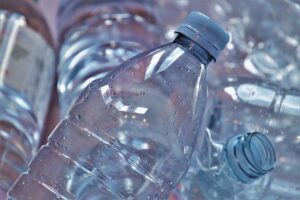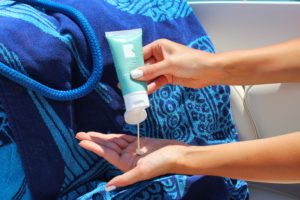Nickel Toxicity

Nickel is a metal commonly encountered due to its utility for a number of different applications. As a metal, nickel is quite hard and corrosion resistant. It is a common component in food grade steel, making up to around 10%. Jewelry often contains the metal due to its luster and resistance to tarnishing. Belt buckles, buttons, coins and watches also commonly contain nickel (Prueitt 2015). Due to its increasing use in industry, exposure to nickel is becoming more common and may pose some health risks.
Skin Toxicity
Nickel is the most common contact allergen. In other words, exposure to nickel causes skin allergies more than any other substance (Ahlström 2019). Similar to latex allergy, the more exposure an individual has to nickel, the higher the risk for developing an allergy (Prueitt 2015). Due to cheap jewelry being a common route of exposure, young women are often most susceptible to developing nickel allergy. Typically, healthy skin does not react to nickel. However, when irritated skin is exposed, allergy is more likely to occur. Skin piercings that use nickel metal or studs to maintain the piercing have a much higher risk for developing nickel allergy due to this mechanism (Artik 2001).
Fortunately, nickel absorption through the skin is quite low, so systemic toxicity from topical exposure to nickel is unlikely. However, children that mouth or suck on cheap jewelry could get more significant exposure to nickel and other toxic metals.
Oral Toxicity of Nickel
As a metal, nickel is commonly found in the environment. As such, it occurs in food, beverages and tap water at low levels. To avoid toxicity, daily exposure should be kept under 13 micrograms per kilogram of body weight per day (Haber 2017). Considering the average adult, consumption should be kept under 1.3 milligrams total per day. For individuals with a nickel skin allergy, levels should be reduced further to just 4 micrograms per kilogram of body weight (about 0.4 mg total per day). For individuals with skin sensitivity, oral ingestion of nickel can increase skin rashes.
Of interest, animal studies suggest that low levels of nickel are required for normal function (Denkhaus 2002). A deficiency of nickel can lead to problems with fetal development during pregnancy and anemia through poor iron absorption. While interesting, due to normal exposure levels found in food and water, deficiencies of nickel, if it even could occur in humans, would be extremely rare.

With higher levels of exposure, nickel can cause heart, liver, lung and kidney disease. Animal studies suggest a degree of neurotoxicity as well. For people exposed to nickel fumes, It also can increase the risk for cancer (EFSA 2020). These health effects are most often encountered in workers who work in the nickel mining, smelting and refining industry but still could be relevant to individuals that have higher levels of exposure from other sources. While stainless steel pots, pans and kitchen utensils contain nickel, it isn’t easily leached from the metal. Boiling stainless steel kitchen implements in vinegar for five minutes only released approximately 0.1 mg of nickel per kg of vinegar, levels that should be safe to consume for individuals without a nickel skin allergy (Kuligowski 1992). For those with nickel allergies, stainless steel cookware should likely be used for non-acidic foods only.
For most individuals, food intake of nickel averages around 100-150 micrograms per day, well under the safe limit. Research out of Europe suggests that foods with the highest levels of nickel include chocolate, beans, hazelnuts, figs and peanuts. Levels ranged between 1-4 mg of nickel per kg of food (Babaahmadifooladi 2020). For individuals without nickel allergies, these levels should generally be safe, especially if these foods are eaten in reasonable quantities. Most people would be hard pressed to eat 2.2 pounds (1 kg) of any of these foods in a single day, although consuming large quantities of these foods could start to get close to the daily limit.
Conclusion
For most people, nickel exposure should be within safe limits from food and drinking water. The biggest hazards with nickel are from skin exposure and work exposure to the metal. Industrial sources of exposure could occur in the mining, steel manufacturing, and battery industries. For individuals with skin allergies to nickel, stainless steel cooking implements should not be used with acidic foods and foods that commonly contain higher quantities of nickel should only be consumed in smaller quantities.



